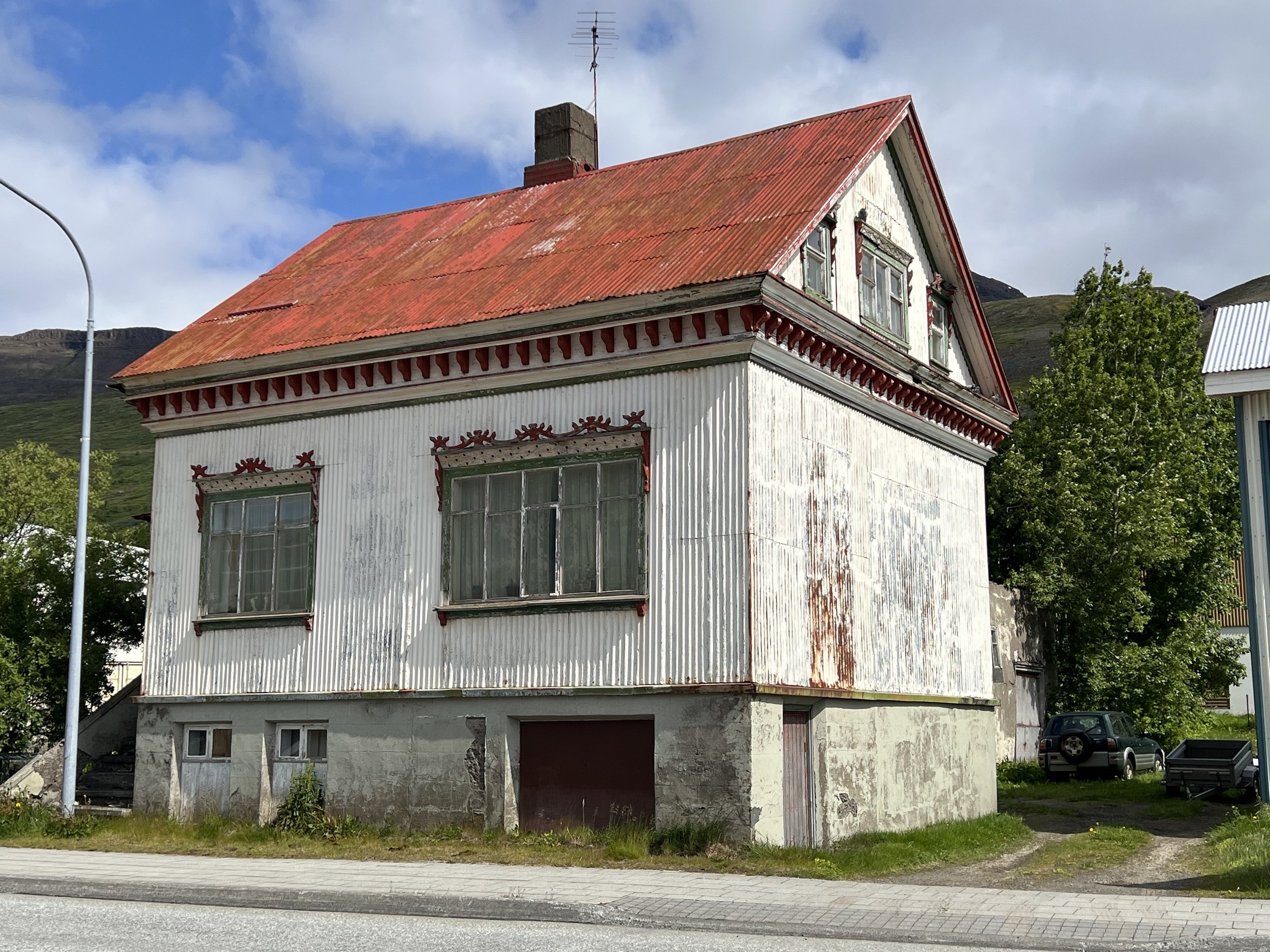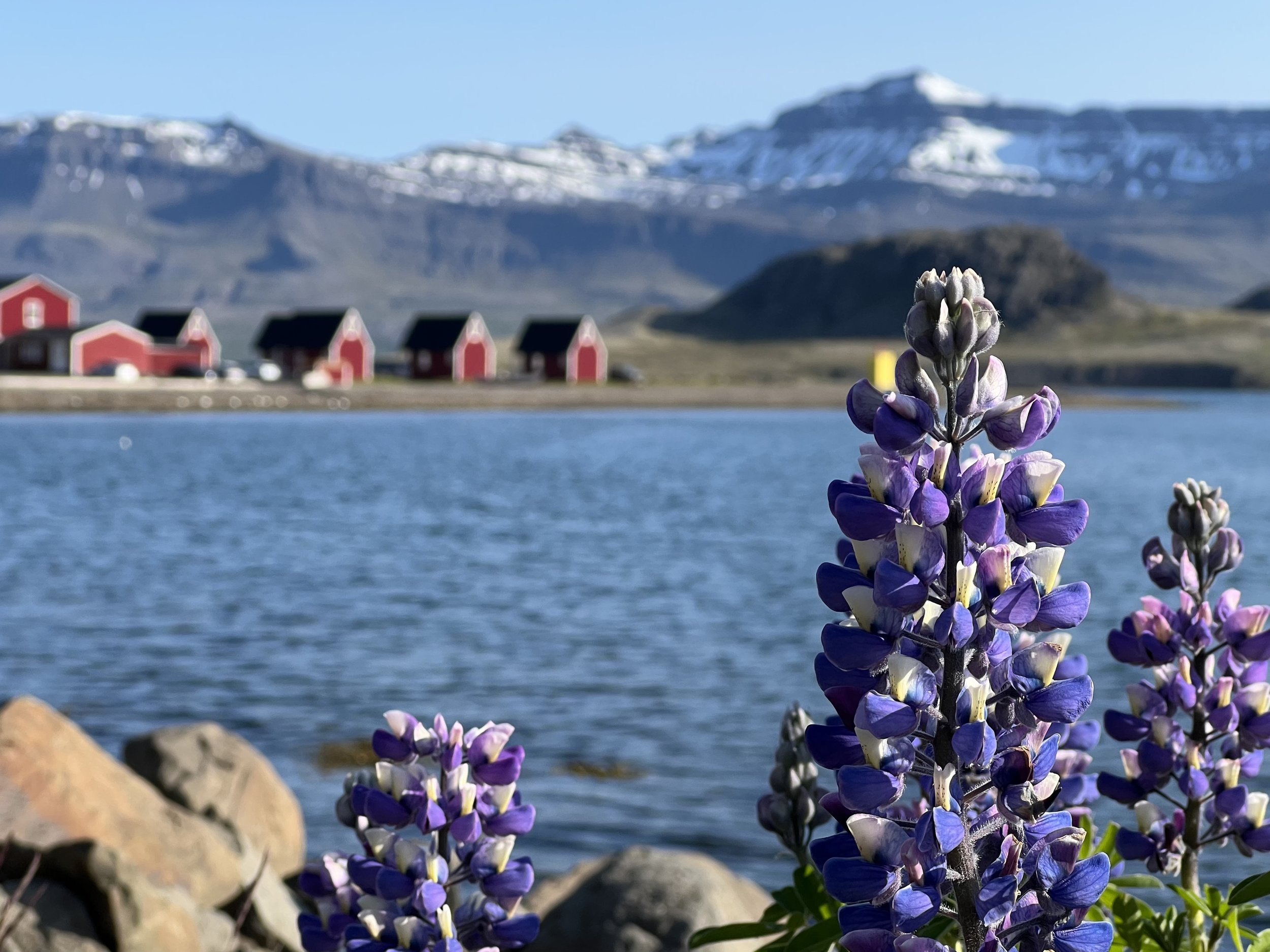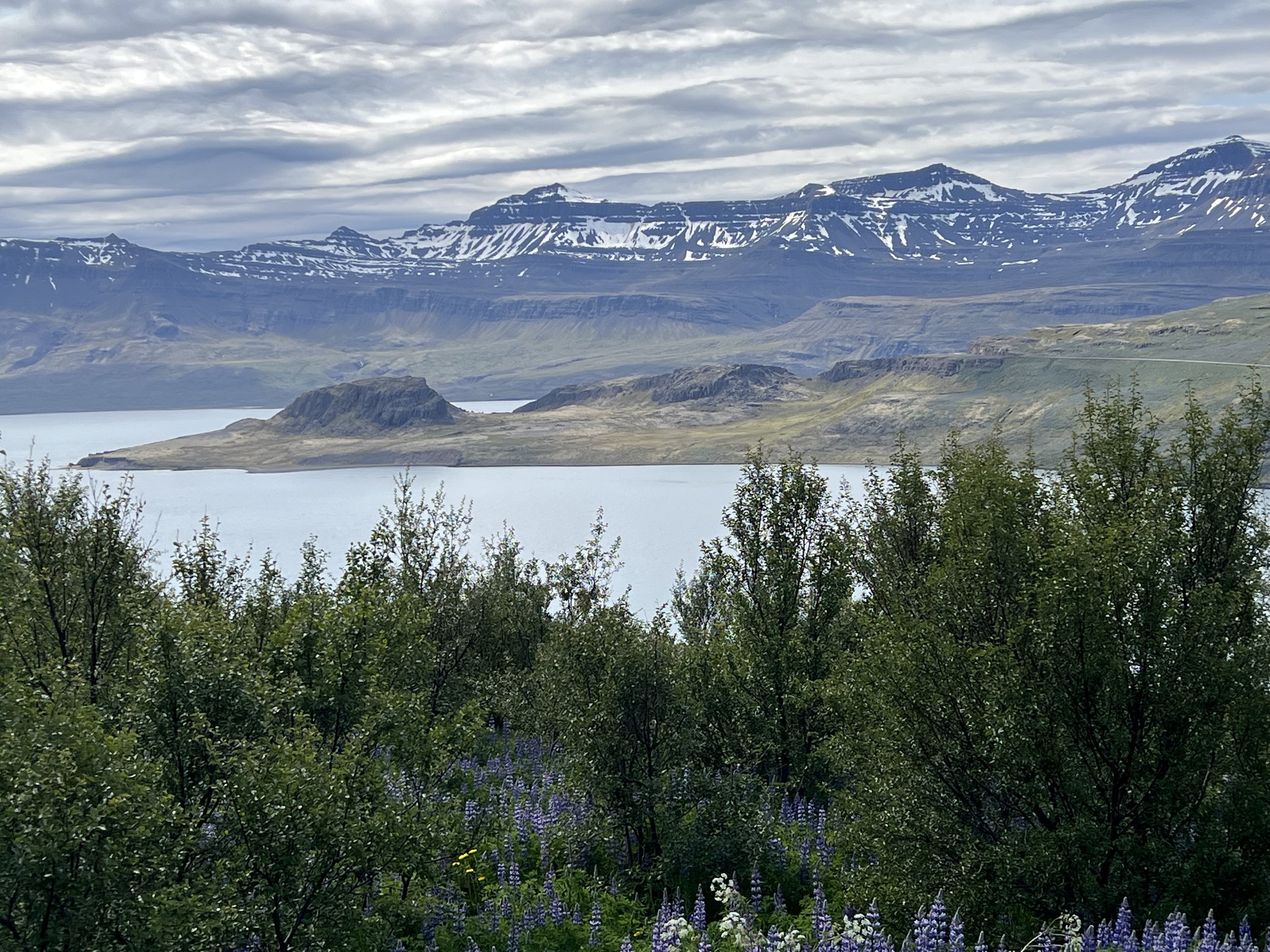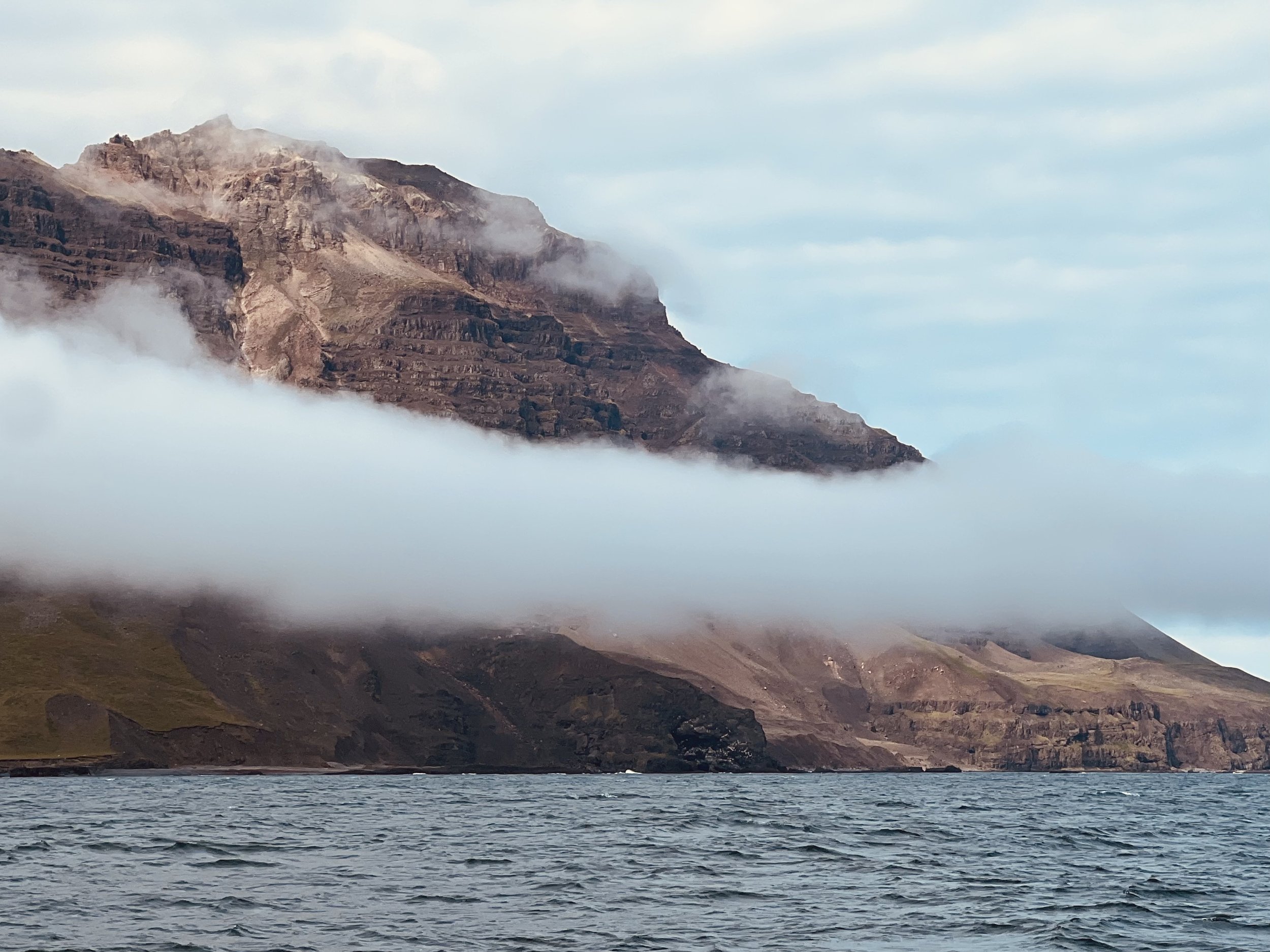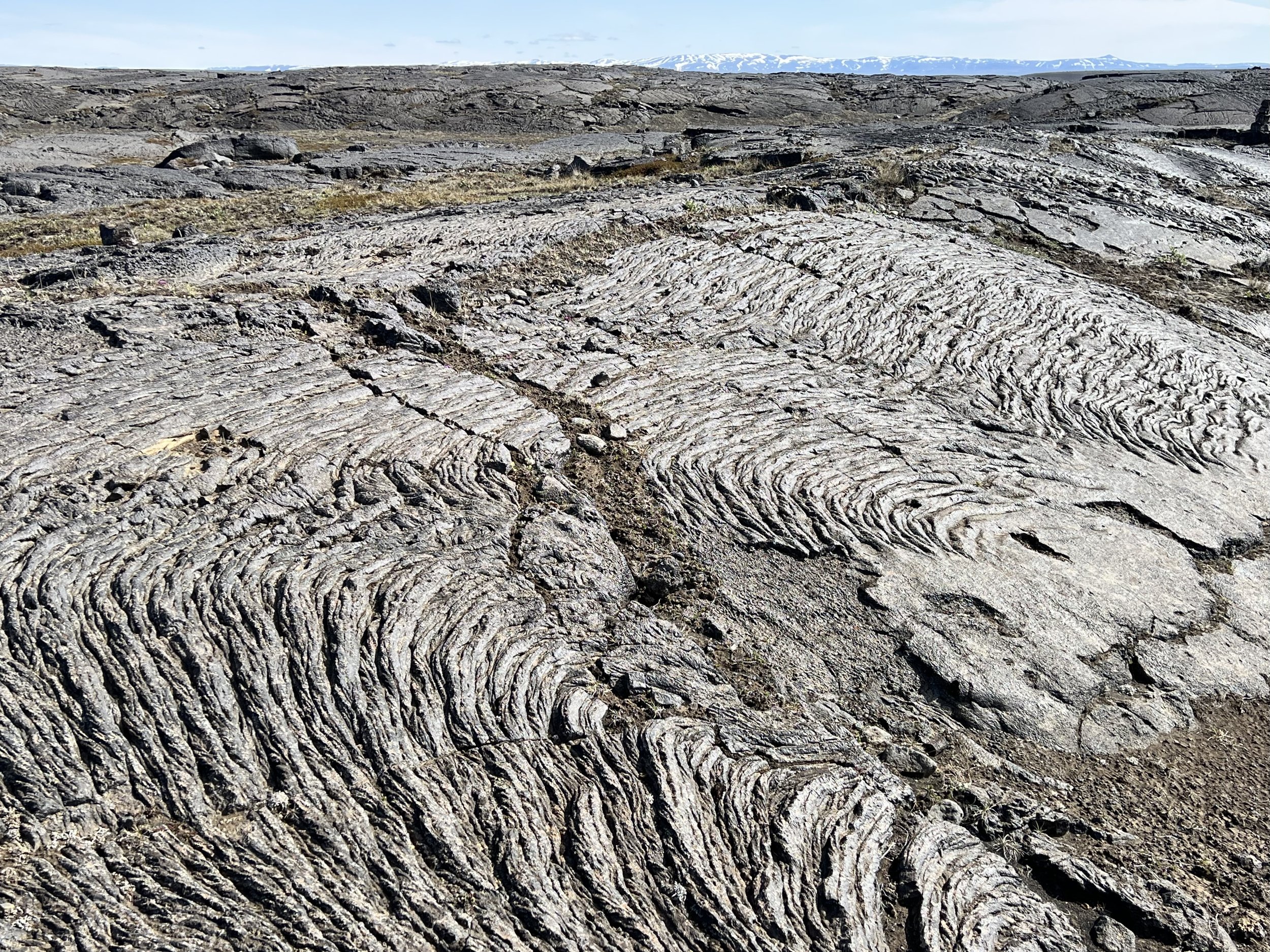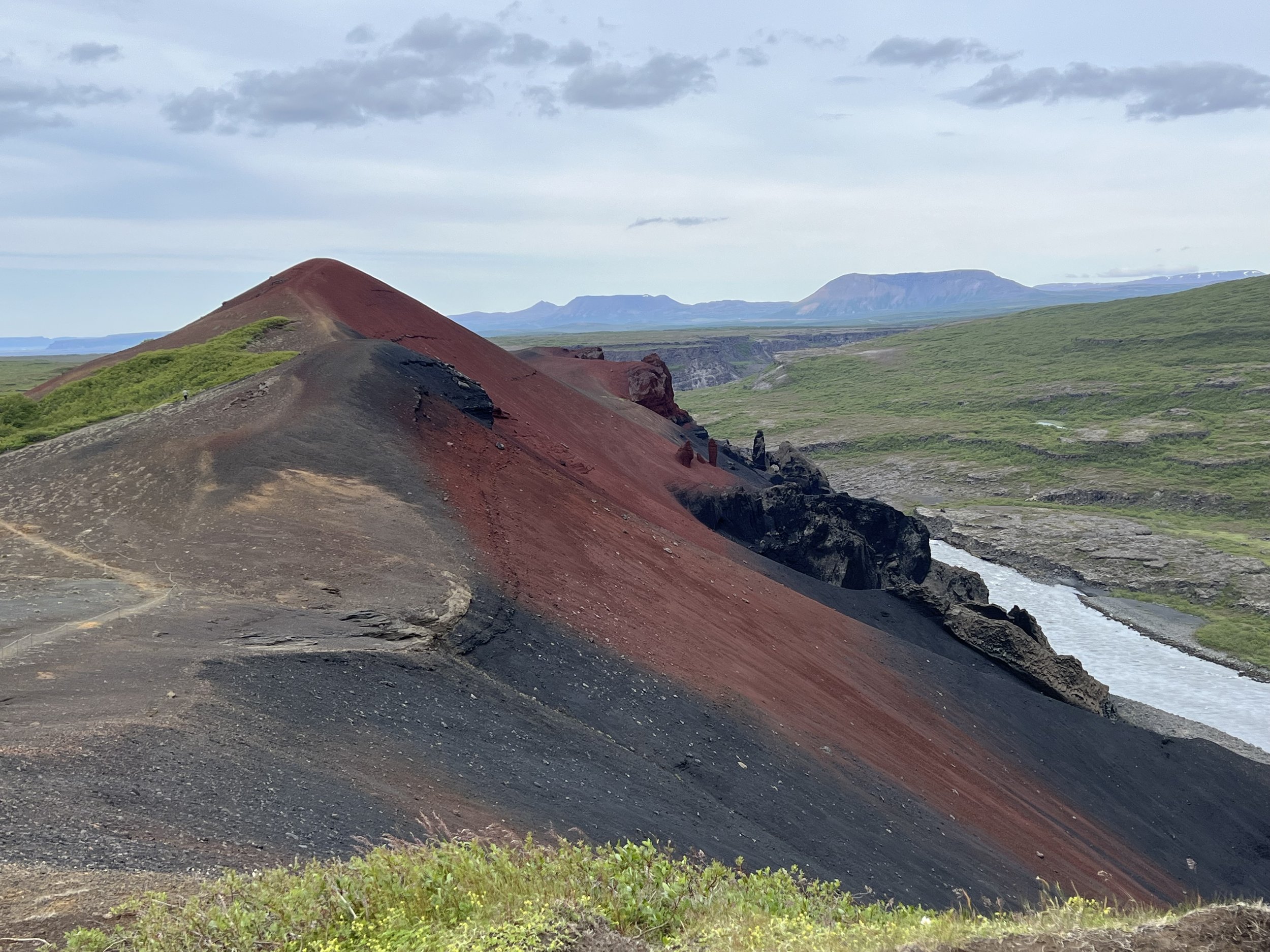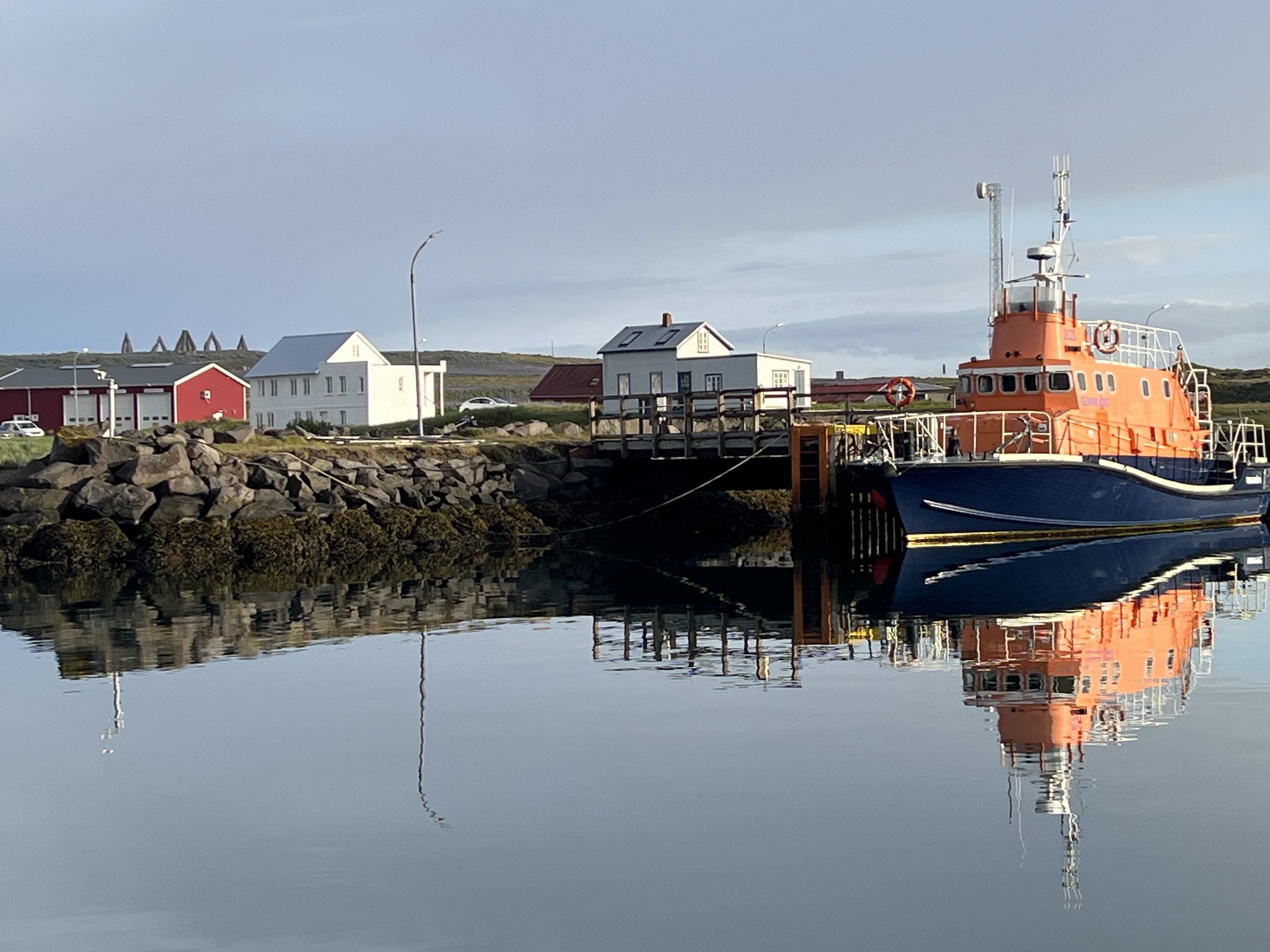Iceland eastern fjords
The crossing from the Faroes was rough. We knew the winds would be quite strong, but had reasoned they were aft of the beam, so that eased their apparent strength. We had forgotten that in colder climates, the air is denser, and as such the wind is effectively a little stronger. In addition, the relatively shallow waters seemed to kick up bigger waves. There were following seas and for the first time ever we got pooped! Over the back seat, into the cockpit. Four feet above sea level, 50+ gallons of water flooded into the cockpit and smashed up against the cabin door. Fortunately it was closed and very little leaked in. It did tear the back cockpit fabric panel though. Another job for the trusty Sailrite sewing machine.
An additional victim of this passage was the extending whisker pole we use to hold the genoa out when sailing downwind. At about 4am there was a loud crunch, and the genoa started flapping around. This had happened before, on our trans-Atlantic passage from Cape Verde to St Lucia, so we were able to quickly diagnose the issue and knew how to get it under control. Needless to say we are not fans of Forespar extendable whisker poles. The weak spot is internal wear, so we are unable to see if there is damage, until it breaks. Fixing that will also have to wait until on a dock.
Closing in on the east coast of Iceland at midnight.
We saw land late in the evening of the second day, finally tying up to a dock at 3am. The skies never got dark and we could enjoy the dramatic scenery as we entered the eastern Icelandic fjords, snow capped mountains all around.
An early morning arrival in eastern Iceland.
Eskifjörður was at the head of the 10 mile long fjord. The water was flat calm as we arrived and we chose to tie up to the local ‘yacht’ club dock on the outskirts of town. It was straightforward and had nice wooden battens on the sides, easy on us and on Helacious. We went to bed. At 5am the winds picked up and the waves started smashing on the transom, it was most unpleasant and sounded like some damage could eventually occur. We got up and moved up the fjord to the town. The small boat harbor was full so we had to tie to the tire covered concrete wall in the commercial fishing harbor. We went to bed for the second time.
The local police had been alerted to our arrival by the coastguard, as we had filed an arrival document with them while enroute. They came to check us in to Iceland, but we were asleep, so they kindly came back later in the morning. That afternoon a spot became available in the small boat harbor, so we moved over there. Much easier to get on and off the boat with floating pontoons. When up against a wall, depending on the tidal range, ladders can be involved, especially at low tide. It was not Helen’s favorite activity, docking 3 times in one day.
Eskifjörður.
For Iceland, Eskifjörður is a mid sized town, the industry is fish processing. A wander down the main street, looking at the homes. Built more with function in mind than aesthetics. They were mostly corrugated steel siding, but with flourishes. One fancier home had a hot tub in the front yard.
Despite the sign, the museum remained closed for the duration of our stay. A shame, as it looked interesting peeking in the windows. The large bouncy playground…. what a great idea; safe, fun and clean. The few items we bought in the grocery, confirmed the eye watering prices we had to get used to. Approximately two-three times US prices. We passed on the smoked whale meat for now. A little conflicted on that score.
A walk along and above the fjord gave some lovely views. Blue lupins were everywhere, the hillsides were purple on the lower slopes. Apparently they are an invasive species, colonizing the infertile volcanic soil, but then with time, making it more fertile and so not suitable for their growth. They are fleeting presence in the grand scheme of things, but so pretty for now.
The next day it was time for repairs. The whisker pole was the most important. Brian managed to pull it apart and he replaced the internal line system with a sturdy bolt. That should solve the issue. Forespar take note, your design is no good.
After a few days in Eskifjörður it was time to move on. We left in the morning with fog banks hovering over the water.
As we exited the fjord, the fog banks lifted and we could enjoy the coastline. The snow capped mountains of the interior were replaced by volcanic hillsides. The colors and patterns in the rock, the spiky ridge-lines and obvious landslides made us realize how new this whole landscape was in geological terms.
Seyðisfjörður.
The next town we visit is Seyðisfjörður. As a ferry port linking Iceland with Europe, and as it was described as a popular tourist town, we anticipated a little more activity than we had found on our first stop. It was not to be, however. We woke up the next day to find a cruise ship had arrived, it was amusing to see the crowds of people wandering around town, also looking for something to do. The weather did not cooperate, it showered on and off all day. It was Iceland Independence day, and so a parade was in order. The town’s 2 fire trucks and 2 police cars took excited youngsters on a tour of downtown, sirens blaring. We visited with a couple of other boats we were familiar with from the Faroes, Daisy from Norway and Momentum from USA. Comparing notes and travel plans was a fun way to spend a damp afternoon.
Enjoying the hospitality of Daisy.
The following day we left and made a short hop north up the coast. We were tired of tying up to docks, we wanted to anchor and have the chance to get our dinghy off the front deck and back in the water.
The anchorage at Borgarfjorður.
The difference between Iceland and other places we have been is the scale. What looks like a nice protected bay on the charts in reality is wide open, 2 miles across, and exposed to swell. Still, it was nice to be off the dock.
The anchorage at Bakkagerði.
After a sketchy beach landing we walked up into the foothills around the bay. How different this landscape is. The photos simply do not reflect the colors in the hillsides, reds, oranges and yellows. The thick mossy undergrowth with occasional bright patches of flowers.
A night of constant rolling had us moving on the next day. We sailed around to Vopnafjörður and tied up to a floating pontoon in the inner small boat harbor. The perfect protected spot to wait out nearly a week of foul weather.
East Icelandic coastline, so raw.
The brief view from Vopnafjörður harbor before the clouds descended..
We stop a man on the street to ask about the car rental office, indicated on the map, but not to be found. The kind gentleman pulls out his phone, makes a couple of calls, and just like that, a rental car gets delivered to our dock that evening, ready for the following day’s adventure. People are so kind, the world over.
We take a tour of the NE corner of Iceland, wanting to see the interior and some crazy geology. We were not disappointed. The snowy mountains of the eastern fjords gave way to barren plains of volcanic gravel and black sand-dunes with volcanic domes rising in the distance.
Lava flows, just a stop at the side of the road.
We arrive at the Dettifoss waterfall, definitely a tourist destination. Along with the throngs we venture to the lookout. Part of the trail had been closed due to a rockfall just a week previously. It seems landslides are a constant threat with this brand new landscape. Dettifoss is one of the largest waterfalls in Europe, water from the Vatnajökull glacier feeds the river and the water has that milky appearence from the sediment it carries.
A little downstream, away from the crowds we visit another waterfall, obviously the same volume of water, but not as wide nor high. The Hafragilsfoss waterfall. The black sandbars deposited along the edges of the turbulant water were a dramatic contrast.
Hafragilsfoss waterfall.
The walls of the canyon were lined with columnar basalt formations were were to see more of at the next stop.
Hljóðaklettar National park. 8-9000 years ago a 6km long volcanic fissure opened up and lava met the river water. The rapid cooling of the lava caused the structures to form columns which were contorted into rosettes and drapes. Subsequent river erosion carved the canyon and exposed the formations.
This was called the Lava Church.
There was a nice walk, winding through the canyons, and finally up a steep climb at the end to view the amazing colors of the Rauðhòlar peak.
We completed our circular drive back to the boat, all highway driving, except for about 10 miles the highway turned into a dirt track. Yes, that low cloud was also en-route, we did not get to see those spectacular sea views.
While in Vopnafjorður waiting for weather to round cape Langanes, we did some maintenance. Good thing too, the generator impeller had broken and parts were discovered downstream of the heat exchanger. We also fixed the aft panel of the cockpit enclosure that had been torn when we got pooped.
We finally had a good forecast and early in the morning we slipped the lines and headed north to Cape Langanes. Our friends who have written a wonderful guide to these northern waters, suggest rounding the cape very close in, along the 10m contour line, about 0.25nm off shore. This is very close, but it reduces the chance of being caught in overfalls, where currents collide and cause very unsettled and rough seas. We mistimed the approach, and were not at slack tide, but at least we had it in our favor. It was rough, but only for a short while as we went right around the tip. It felt like we could touch the cliffs.
Cape Langanes.
We pull into Raufarhöfn, the most northerly port on mainland Iceland, just 3nm south of the arctic circle. The next day we visit the Arctic Henge, a recent and ambitious project, still under construction.
The description of the proposed site; 72 boulders in a circle, indicating the 72 dwarfs of the old world Viking Sagas, above which the gates facing the cardinal points arise and in the center a throne topped with a crystal stone to reflect the midnight sun. It will be quite a sight, once it is finished.
Icelandic horses are small and rugged. No foreign born horses may be imported, and exported animals are not permitted to return, protecting the blood line.
The weather changes so dramatically here. After a cold and very blustery day, we woke to sunny skies and calm water. It was time to start the journey west.
Follow our progress on the tracking page.
https://forecast.predictwind.com/tracking/display/SVHelacious/









